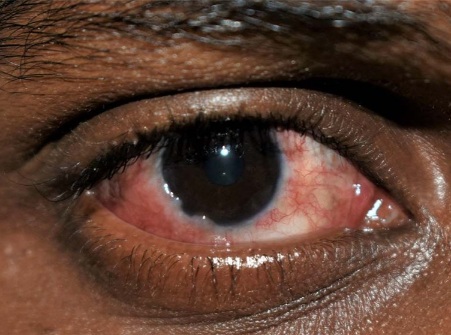Don’t use breast milk for eye treatment –Optometrist advises


Dr. Godwin Asamoah Ahiakwao, Principal Optometrist and Head of the Eye Unit at the Ga North Municipal Hospital, has vehemently cautioned parents against the common, yet dangerous, practice of applying breast milk to a child’s eyes when they observe changes in colour or discomfort.
Dr. Ahiakwao’s strong advisory was delivered during a special, eye-screening exercise held at the hospital to commemorate World Sight Day 2025, which was celebrated under the theme: “Love Your Eyes, Love Your Sight.”
Breast Milk is Not Sterile: Risk of Severe Infection
The Principal Optometrist explained that far from being a remedy, using breast milk on the eye can introduce harmful pathogens, escalating minor concerns into serious medical problems.
“We want parents to stop using breast milk on their children’s eyes because applying breast milk to the eye can cause infections, including potentially severe ones. This is because breast milk is not sterile and can introduce bacteria into the eye.”
Instead of resorting to unverified home remedies, Dr. Ahiakwao strongly urged parents to seek professional medical intervention promptly when ocular concerns arise, emphasizing the long-term educational impact of proper eye care.
“They have to help protect their children’s eyes by sending them to the hospital when they observe something unusual instead of risking damage by using breastmilk.”
He underscored the paramount importance of vision for childhood development:
“It’s the eyes they use for learning and reading, so parents must make sure their children’s sight is always checked,” he added.
To actively promote good eye health and ensure early detection of conditions, the Ga North Municipal Hospital conducted a free eye-screening exercise for pupils of Silicon Valley International School. The program successfully screened approximately 1,000 pupils.
Dr. Ahiakwao described sight as a “precious gift from God” and also advised against common modern-day habits that strain vision, such as excessive screen time among students and office workers.
He provided a practical, universally accepted rule for digital eye strain prevention: the $20/20/20$ Rule.
“We are in the digital age, and our use of phones and computers has increased.
For every 20 minutes of close work, take a 20-second break and look 20 metres away. That simple practice helps to relax the eyes and prevent strain,” he advised.
The initiative was lauded by the school’s administration for its positive impact on academic output. Dominic Owusu Ansah, Head of the Junior High Department and Boarding House Supervisor, expressed gratitude on behalf of the school and parents.
He confirmed the success of continuous engagement with the health service, noting that the proactiveness of the Ga North Municipal Health Service has directly helped improve pupils’ academic performance by addressing sight-related challenges early.
Ansah’s statement highlights a critical data point in educational health: early intervention in visual acuity issues is directly correlated with improved learning outcomes and overall academic success.
DISCLAIMER: The Views, Comments, Opinions, Contributions and Statements made by Readers and Contributors on this platform do not necessarily represent the views or policy of Multimedia Group Limited.
DISCLAIMER: The Views, Comments, Opinions, Contributions and Statements made by Readers and Contributors on this platform do not necessarily represent the views or policy of Multimedia Group Limited.
Source link





